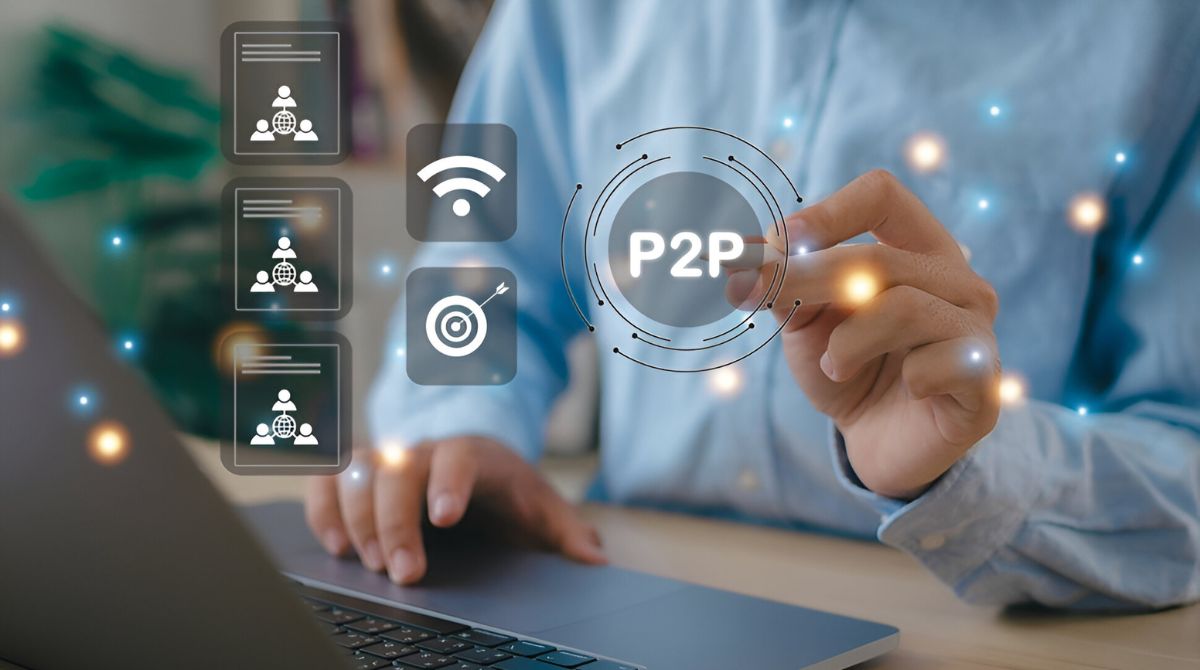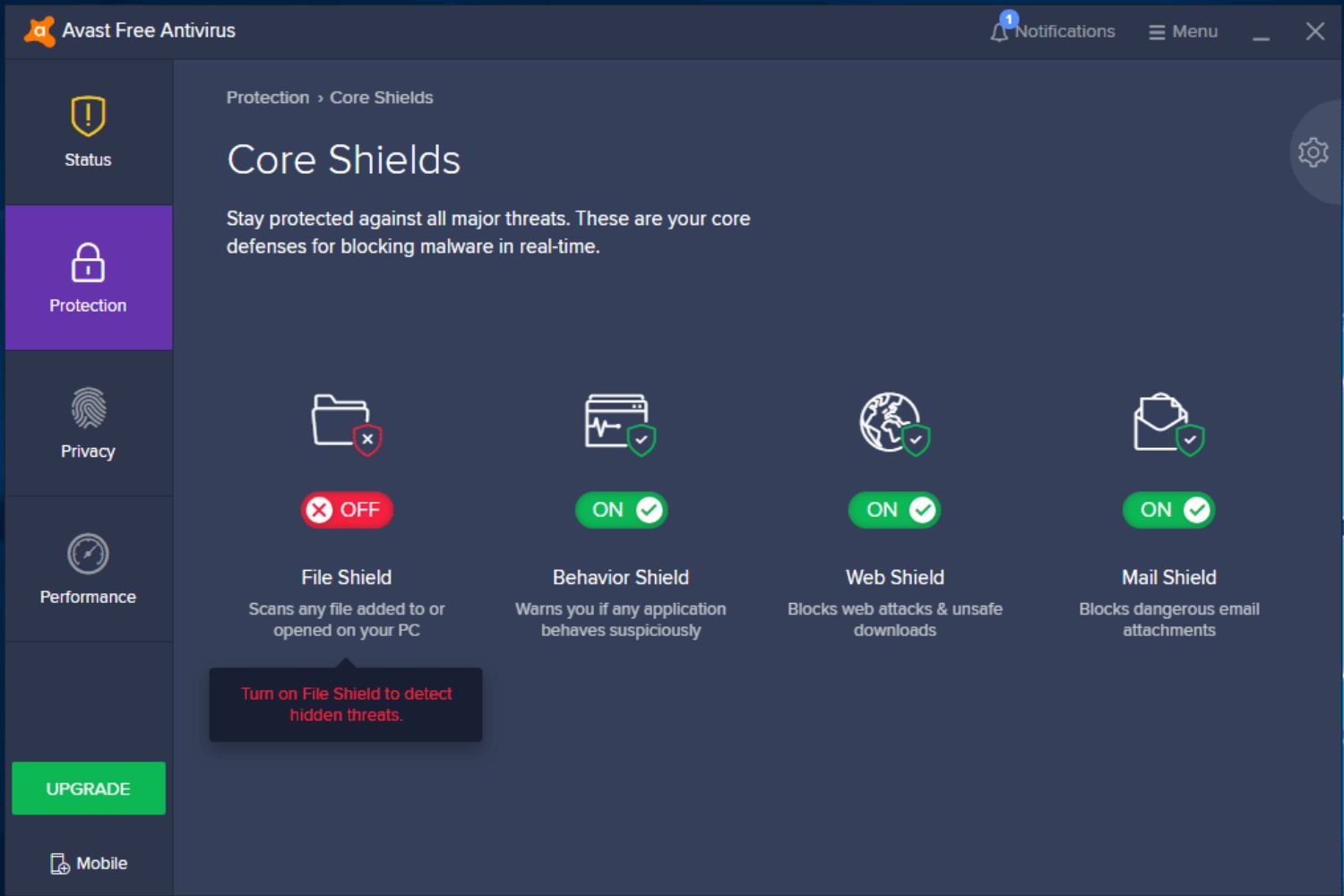Introduction
Welcome to the world of SAP P2P, where seamless procurement processes meet efficient supplier management. SAP P2P, short for Procure-to-Pay, is a comprehensive solution provided by SAP that automates and streamlines the entire procurement cycle, from requisitioning to payment. This powerful software helps organizations manage their purchasing activities, control costs, and improve supplier relationships.
In today’s fast-paced digital landscape, businesses need efficient and transparent procurement processes to gain a competitive edge. SAP P2P plays a vital role in this by offering a suite of integrated tools and functionalities. By utilizing this solution, businesses can digitize and automate their procurement operations, resulting in improved efficiency, reduced manual errors, and enhanced financial control.
With SAP P2P, organizations can integrate and streamline various procurement activities, including supplier selection, purchase requisition, purchase order creation, goods receipt, invoice verification, and payment. This end-to-end integration enhances visibility and transparency across the procurement cycle, allowing organizations to make informed decisions, manage supplier relationships effectively, and optimize costs.
Implementing SAP P2P brings numerous benefits to organizations of all sizes and industries. Not only does it offer increased efficiency, but it also enables organizations to align their procurement processes with best practices, compliance standards, and industry regulations. Furthermore, it provides advanced analytics and reporting capabilities, allowing businesses to gain valuable insights into their procurement operations and make data-driven decisions.
In the following sections, we will delve deeper into the key components of SAP P2P, the process flow involved, the advantages of using SAP P2P, the challenges and limitations to consider, and the best practices for implementing this powerful procurement solution.
Definition of SAP P2P
SAP P2P, or Procure-to-Pay, is a comprehensive software solution provided by SAP that encompasses the entire procurement process, from requisitioning to payment. It is designed to automate and streamline the procurement cycle, allowing organizations to efficiently manage their purchasing activities and supplier relationships.
At its core, SAP P2P is a combination of modules and functionalities within the SAP ecosystem. These modules include SAP Ariba, SAP Supplier Relationship Management (SRM), and SAP Invoice Management. Together, they provide a seamless end-to-end procurement solution, allowing organizations to digitize and optimize their procurement operations.
One of the key features of SAP P2P is its ability to integrate procurement processes across the entire organization. It offers a centralized platform where employees can generate purchase requisitions, create purchase orders, and manage supplier contracts. This integration ensures consistency, reduces manual errors, and improves the overall efficiency of the procurement process.
SAP P2P also provides advanced capabilities for supplier management. Organizations can use the software to evaluate and select suppliers based on predefined criteria such as pricing, quality, delivery, and compliance. It allows for seamless collaboration with suppliers, enabling real-time communication, document sharing, and performance tracking.
In terms of financial management, SAP P2P offers robust functionalities for invoice verification and payment processing. It automates the matching of invoices with purchase orders and goods receipts, ensuring accurate and timely payments. Organizations can also leverage the system’s reporting and analytics capabilities to gain insights into their procurement spend, identify cost-saving opportunities, and align their purchasing activities with strategic goals.
Overall, SAP P2P streamlines and optimizes the procurement process by digitizing manual tasks, integrating systems, and providing analytical insights. It empowers organizations to make faster, more informed decisions, reduce procurement costs, and strengthen their relationships with suppliers.
Benefits of Implementing SAP P2P
Implementing SAP P2P can bring a multitude of benefits to organizations across various industries. By automating and streamlining the procurement process, businesses can experience improved efficiency, reduced costs, and enhanced supplier management. Below are some of the key benefits of implementing SAP P2P:
1. Increased Efficiency: SAP P2P eliminates manual and time-consuming tasks associated with procurement, such as generating purchase requisitions, checking for approvals, and reconciling invoices. By automating these processes, organizations can save time and focus on more strategic activities.
2. Cost Savings: SAP P2P enables organizations to negotiate better pricing with suppliers, identify cost-saving opportunities, and efficiently manage contracts. By optimizing procurement activities and reducing manual errors, organizations can achieve significant cost savings in their purchasing operations.
3. Enhanced Supplier Management: With SAP P2P, organizations can improve their supplier relationships by implementing effective supplier evaluation criteria, tracking supplier performance, and facilitating transparent communication. This leads to better collaboration, timely deliveries, and improved product quality.
4. Improved Financial Control: SAP P2P provides visibility into the financial aspects of procurement, including accurate tracking of expenses, financial reporting, and automated invoice verification. Organizations can better manage their cash flow, adhere to compliance regulations, and gain insights into their procurement spend.
5. Streamlined Collaboration: SAP P2P allows for seamless collaboration between employees, suppliers, and other stakeholders involved in the procurement process. Real-time communication, document sharing, and centralized data ensure everyone is on the same page, leading to improved decision-making and faster resolution of issues.
6. Data-Driven Insights: By utilizing the reporting and analytical capabilities of SAP P2P, organizations can gain valuable insights into their procurement operations. This includes tracking key performance indicators, identifying trends, and making data-driven decisions to optimize procurement strategies.
Overall, implementing SAP P2P can transform an organization’s procurement process, leading to increased efficiency, cost savings, improved supplier management, enhanced financial control, streamlined collaboration, and data-driven insights.
Key Components of SAP P2P
SAP P2P is a comprehensive solution that comprises several key components, each playing a crucial role in automating and streamlining the procurement process. These components work together seamlessly to provide a fully integrated procurement solution. Below are the key components of SAP P2P:
1. SAP Ariba: SAP Ariba is a cloud-based procurement platform that enables organizations to connect and collaborate with suppliers. It provides features such as supplier discovery, supplier qualification, contract management, and electronic sourcing, allowing organizations to streamline their supplier management processes.
2. SAP Supplier Relationship Management (SRM): SAP SRM is a module that facilitates the management of supplier relationships. It allows organizations to assess and evaluate suppliers based on predefined criteria and performance metrics. Additionally, it enables the creation and management of supplier contracts, helping organizations optimize their procurement activities.
3. SAP Invoice Management: SAP Invoice Management is a module that automates the processing of invoices and streamlines the accounts payable process. It enables organizations to electronically capture, verify, and match invoices with purchase orders and goods receipts. This significantly reduces manual errors, accelerates the invoice approval process, and improves the accuracy of financial data.
4. Purchase Requisition: The purchase requisition component of SAP P2P facilitates the creation and submission of purchase requests. It allows employees to generate purchase requisitions for goods or services needed, ensuring proper documentation and approval workflows before moving forward with the procurement process.
5. Purchase Order Management: The purchase order management component manages the creation, approval, and tracking of purchase orders within SAP P2P. It enables organizations to monitor the status of orders, track deliveries, and communicate with suppliers effectively. Purchase orders can be generated automatically or manually, depending on organizational requirements.
6. Goods Receipt: The goods receipt component ensures that organizations receive the correct quantity and quality of goods or services from their suppliers. It allows for the verification of deliveries against purchase orders and provides a mechanism for addressing discrepancies or issues with received items.
7. Invoice Verification and Payment Processing: The invoice verification component automates the matching of invoices with purchase orders and goods receipts. It helps organizations validate supplier invoices, resolve discrepancies, and initiate payment processing. SAP P2P integrates with financial systems to facilitate seamless payment execution.
These key components of SAP P2P work together to provide end-to-end procurement functionality, from the creation of purchase requisitions to payment processing. They enable organizations to streamline procurement operations, improve supplier relationships, enhance financial control, and optimize the overall procurement process.
Process Flow in SAP P2P
The process flow in SAP P2P follows a systematic and streamlined approach, ensuring efficient procurement operations. It encompasses the entire procurement cycle, from requisitioning to payment, and involves various steps and stakeholders. Below is an overview of the process flow in SAP P2P:
1. Purchase Requisition: The procurement process starts with a purchase requisition, where employees submit requests for goods or services needed. The requisitions are created in SAP P2P, following predefined workflows and approval processes. Once approved, the requisitions move forward to the next stage.
2. Purchase Order Creation: After the purchase requisitions are approved, SAP P2P generates purchase orders automatically based on predefined templates and rules. The purchase orders include details such as item description, quantities, pricing, and delivery requirements. They are then sent to suppliers for confirmation.
3. Supplier Confirmation: Upon receiving the purchase order, suppliers review the details and confirm their ability to deliver the requested goods or services within the specified timeframe. They may provide feedback or suggest alternate options if necessary. The confirmation is sent back to SAP P2P for further processing.
4. Goods Receipt: As the supplier delivers the ordered goods or completes the requested services, the receiving department in the organization performs a goods receipt process in SAP P2P. This step involves verifying the received items against the purchase order and ensuring the correct quantity and quality. Any discrepancies are noted and addressed accordingly.
5. Invoice Verification: Once the goods receipt is completed, the next step is to verify the supplier’s invoice. SAP P2P automatically matches the invoice with the corresponding purchase order and goods receipt, ensuring accurate billing and payment. Any discrepancies between the invoice and the received goods are examined and resolved through the system’s built-in processes.
6. Payment Processing: After successful invoice verification, SAP P2P facilitates the payment processing. The system generates payment requests or initiates the necessary transactions in the connected financial system. Payments can be made through various methods, including electronic funds transfer (EFT) or checks, depending on the organization’s payment policies.
7. Reporting and Analytics: Throughout the entire process, SAP P2P captures and stores relevant data, enabling organizations to generate reports and perform analytics. These reports provide insights into key procurement metrics, such as spend analysis, supplier performance, and savings achieved. The generated reports support informed decision-making and strategic planning for future procurement activities.
The process flow in SAP P2P ensures a seamless and controlled procurement journey, from requisitioning to payment. By standardizing and automating the procurement process, organizations can improve efficiency, maintain transparency, and drive cost savings across their procurement operations.
Advantages of Using SAP P2P
Implementing SAP P2P brings numerous advantages to organizations, making it a preferred solution for managing procurement processes. By leveraging the capabilities of SAP P2P, businesses can optimize their procurement operations, achieve cost savings, and strengthen their supplier relationships. Below are some of the key advantages of using SAP P2P:
1. Improved Efficiency: SAP P2P automates manual procurement tasks, reducing the time and effort required for activities such as generating purchase requisitions, creating purchase orders, and invoice processing. This streamlines the procurement process, allowing employees to focus on more strategic tasks and increasing overall efficiency.
2. Cost Savings: With SAP P2P, organizations can leverage real-time data and analytics to identify cost-saving opportunities. The system provides insights into spending patterns, supplier performance, and contract compliance, enabling businesses to negotiate better pricing, consolidate suppliers, and optimize procurement activities. This leads to significant cost savings and improved financial control.
3. Enhanced Supplier Management: SAP P2P facilitates effective supplier management by providing tools for evaluating and selecting suppliers, tracking performance metrics, and managing contracts. Organizations can establish strategic partnerships, improve communication and collaboration with suppliers, and ensure timely deliveries of goods and services. This strengthens supplier relationships and contributes to greater overall efficiency.
4. Increased Compliance: SAP P2P helps organizations adhere to regulatory requirements and internal policies by enforcing predefined approval workflows, ensuring proper documentation, and maintaining an audit trail of all procurement activities. This ensures transparency, reduces compliance risks, and enables organizations to demonstrate accountability and sound governance practices.
5. Streamlined Integration: SAP P2P seamlessly integrates with other SAP modules and external systems, such as financial systems and supplier databases. This integration enables smooth data flow, eliminates manual data entry, and provides a holistic view of procurement operations. It also improves data accuracy and eliminates redundant processes, resulting in streamlined integration across the organization.
6. Real-time Insights and Reporting: SAP P2P offers robust reporting and analytics capabilities, allowing organizations to gain real-time insights into their procurement activities. It provides customizable dashboards, key performance indicators, and advanced reporting tools that enable businesses to monitor spending, track savings, and make data-driven decisions. These insights drive continuous improvement and support strategic procurement planning.
Overall, the advantages of using SAP P2P extend across the procurement cycle, from requisitioning to payment. By leveraging this powerful solution, organizations can achieve improved efficiency, cost savings, enhanced supplier management, increased compliance, streamlined integration, and access to real-time insights for informed decision-making.
Challenges and Limitations of SAP P2P
While SAP P2P offers numerous benefits, there are also some challenges and limitations that organizations may face when implementing and utilizing the solution. It is important to be aware of these factors to effectively manage them and maximize the effectiveness of SAP P2P. Below are some of the common challenges and limitations of SAP P2P:
1. Complex Implementation: Implementing SAP P2P is a complex process that requires careful planning, configuration, and customization to align with an organization’s specific requirements. It may necessitate involvement from various business units and stakeholders, as well as resources with expertise in SAP implementation. Organizations need to allocate adequate time and resources to ensure a successful implementation.
2. Data Integration: SAP P2P needs to integrate with other systems within an organization’s IT landscape, such as ERP and financial systems. Ensuring seamless data integration and establishing data mappings can be challenging, especially when dealing with legacy systems or third-party applications. Organizations should carefully plan and test data integration processes to ensure smooth operation.
3. User Adoption: Introducing a new system like SAP P2P requires user adoption and training. Some employees may resist change or find it challenging to adapt to the new processes and software. Proper end-user training and change management strategies are crucial to facilitate smooth transition and ensure widespread user adoption.
4. Customization Complexity: SAP P2P provides various configuration options to meet specific business requirements. However, customizing the solution can be complex and time-consuming. Organizations need to carefully evaluate their customization needs and consider the impact on long-term system support and upgradeability.
5. Supplier Enablement: SAP P2P relies on suppliers participating in electronic procurement processes. Onboarding and enabling suppliers to use the system, especially smaller or less technologically advanced suppliers, can be challenging. Organizations may need to invest time and resources in supplier enablement activities, such as training and providing support, to ensure smooth collaboration.
6. System Maintenance and Upgrades: Maintaining and upgrading SAP P2P can be an ongoing challenge. Regular system maintenance, bug fixes, and upgrades may be required to ensure system stability and security. Organizations should establish proper procedures and dedicate resources to manage system maintenance effectively.
7. Scalability: As organizations grow and their procurement needs evolve, they may encounter scalability challenges with SAP P2P. The system may require additional configuration or customization to handle larger transaction volumes, complex workflows, or multi-entity operations. Organizations should assess their long-term growth plans and ensure that SAP P2P can scale accordingly.
By understanding these challenges and limitations, organizations can proactively address them to make the most of their SAP P2P implementation. Proper planning, change management, and ongoing support and maintenance are key factors that contribute to successful utilization of the solution.
Best Practices for Implementing SAP P2P
Implementing SAP P2P requires careful planning, preparation, and execution to ensure the successful adoption and utilization of the solution. By following best practices, organizations can optimize their implementation process and maximize the benefits of SAP P2P. Here are some best practices to consider:
1. Clearly Define Objectives: Clearly define the objectives and desired outcomes of implementing SAP P2P. This includes understanding the specific pain points, goals, and expected benefits. Having a clear vision for the project will guide the implementation process and enable effective measurement of success.
2. Conduct a Process Assessment: Before implementing SAP P2P, conduct a thorough assessment of existing procurement processes. Identify areas for improvement, streamline inefficient processes, and document desired process changes. This assessment will serve as a blueprint for configuring SAP P2P to align with the organization’s specific requirements.
3. Engage Key Stakeholders: Involving key stakeholders throughout the implementation process is crucial for success. Engage representatives from procurement, finance, IT, and other business units to ensure that all perspectives are considered, requirements are understood, and collaboration is fostered.
4. Invest in User Training and Change Management: User training and change management are vital for effective adoption of SAP P2P. Provide comprehensive training to end-users, emphasizing the benefits, functionality, and new processes associated with the solution. Communicate effectively and involve employees in the change process to mitigate resistance and ensure a smooth transition.
5. Ensure Data Quality and Integration: Data is at the heart of SAP P2P. Ensure data cleanliness and accuracy before migrating or integrating data with the solution. Establish data governance processes, validate the completeness and correctness of data, and develop protocols for ongoing data maintenance. Proper data integration with other systems is crucial to ensure seamless end-to-end processes.
6. Configure and Customize Wisely: While SAP P2P offers configurability and customization options, it is important to strike a balance. Avoid unnecessary customization that may hinder system stability or complicate future upgrades. Focus on aligning the solution with the organization’s specific requirements while leveraging SAP’s best practices and standard functionalities.
7. Establish Supplier Enablement Strategies: For successful supplier engagement, develop clear strategies for supplier onboarding and enablement. Provide training, support, and clear communication channels to facilitate suppliers’ understanding and utilization of the system. Collaborate closely with key suppliers and establish partnerships that support long-term collaboration and continuous improvement.
8. Regularly Monitor and Measure: Continuously monitor and measure the performance of SAP P2P to ensure its effectiveness. Define key performance indicators (KPIs) and establish a monitoring framework to track the achievement of desired outcomes. Regularly review reports, analyze data, and seek feedback from stakeholders to proactively address any issues or identify areas for improvement.
By following these best practices, organizations can embark on a successful SAP P2P implementation journey. Effective planning, stakeholder engagement, user training, data integration, and ongoing monitoring are key factors that contribute to a seamless and highly functional SAP P2P solution.
Conclusion
In conclusion, SAP P2P (Procure-to-Pay) is a powerful solution that revolutionizes the procurement process for organizations. By automating and streamlining procurement activities, SAP P2P offers numerous benefits including increased efficiency, cost savings, enhanced supplier management, improved financial control, streamlined collaboration, and data-driven insights.
Throughout this article, we have explored the various components of SAP P2P, the process flow involved, and the advantages it brings to organizations. We have also discussed the challenges and limitations that may arise when implementing SAP P2P, emphasizing the importance of careful planning, user training, data integration, and ongoing monitoring.
To successfully implement SAP P2P, organizations should clearly define their objectives, conduct a process assessment, engage key stakeholders, invest in user training and change management, ensure data quality and integration, configure and customize wisely, establish supplier enablement strategies, and regularly monitor and measure the performance of the system.
It is crucial for organizations to be aware of the potential challenges and limitations of SAP P2P, such as complex implementation, user adoption, customization complexity, and scalability. Being prepared to address these challenges will help organizations overcome obstacles and make the most of their SAP P2P implementation.
SAP P2P is an invaluable tool for organizations looking to optimize their procurement processes, control costs, and build stronger supplier relationships. By embracing this comprehensive solution, organizations can navigate the procurement cycle with ease and achieve their strategic procurement goals.
To fully leverage SAP P2P, organizations should consider partnering with experienced SAP consultants or experts who can guide them through the implementation process, provide ongoing support, and help drive maximum value from the system.
With its ability to streamline procurement operations, improve efficiency, and drive cost savings, SAP P2P proves to be a valuable asset for organizations in today’s competitive business landscape.

























